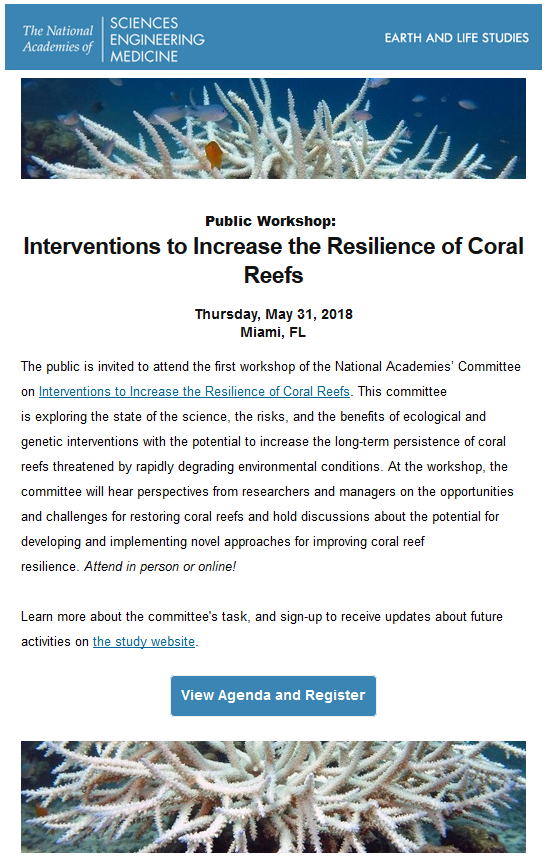Come Find the Data You Need!
Grow your skills and your data resources in the Data Discovery Science Competition at DataDiscoveryStudio.org
Data Discovery Studio is built to help scientists find data. It hosts records for over 1.6 million datasets and resources from over 40 repositories, and continues to grow. Individuals, classes, and sci-tech teams can compete in two categories:
(1) Build a shareable Collection of datasets from existing resources, and add links to other datasets and resources in other repositories. We show you how!
(2) Modify existing Jupyter Notebooks or create your own to explore a data type of interest. Guidance provided!
Find details at bit.ly/ddscompete or jump in and start exploring at DataDiscoveryStudio.org – enter by May 1, 2019.
Please share broadly! We built this NSF-funded EarthCube gateway for you, want it to be useful, and eagerly welcome your feedback.
_____
Note to coral reef scientists: the site already includes over 16,600 records of coral reef datasets and resources – enough to begin a select collection of your own to share with collaborators, and point to more.
More Details:
Both competition categories contribute to science. (1) Collections will gather and tag resources, including datasets, with a focus you choose for research or community use. (2) Jupyter Notebooks will help develop workflows for datasets with a common theme or structure. Both areas will help address real science questions, share results and resources with others, and will help improve the gateway for future users. The competition is suitable for individual, team, or class entry.
DDStudio’s strongest holdings in datasets and resources are in earth, ocean, atmospheric, hydrologic, geologic, planetary, ecological, and other geoscience domains, broadly defined. Try out a favorite search term at datadiscoverystudio.org – if DDStudio doesn’t have what you need, you can contribute a new link, or point us to repositories to add. DDStudio goes beyond search: some datasets can be explored right on site using example Jupyter Notebooks (e.g., sensor data) – or develop and contribute your own Notebooks.
You can’t win if you don’t enter – show up and represent your domain! bit.ly/ddscompete






 We all recognize that communication and education about science concepts and the process of science is more important than ever. Fortunately, coral reefs are charismatic ecosystems that inspire much curiosity, concern, and interest from many sectors of society. While there is no shortage of stunning images and videos online, resources that combine these visuals with robust educational content can be more challenging to identify; they do exist and I’ve put together some of my favorites here. The list is not exhaustive, and we welcome your suggestions for great additions.
We all recognize that communication and education about science concepts and the process of science is more important than ever. Fortunately, coral reefs are charismatic ecosystems that inspire much curiosity, concern, and interest from many sectors of society. While there is no shortage of stunning images and videos online, resources that combine these visuals with robust educational content can be more challenging to identify; they do exist and I’ve put together some of my favorites here. The list is not exhaustive, and we welcome your suggestions for great additions. Scientists need better ways to analyze and integrate their data and collaborate with other scientists; new computing technologies and tools can help with this. However, it’s difficult to overcome the challenge of disparate perspectives and the absence of a common vocabulary: this is true of multidisciplinary science teams, and true when scientists try to talk with computer scientists. Workflows, as a way to help design and implement a workbench, are needed both as a collaboration space and a blueprint for implementation.
Scientists need better ways to analyze and integrate their data and collaborate with other scientists; new computing technologies and tools can help with this. However, it’s difficult to overcome the challenge of disparate perspectives and the absence of a common vocabulary: this is true of multidisciplinary science teams, and true when scientists try to talk with computer scientists. Workflows, as a way to help design and implement a workbench, are needed both as a collaboration space and a blueprint for implementation.
 If you’re attending
If you’re attending 

